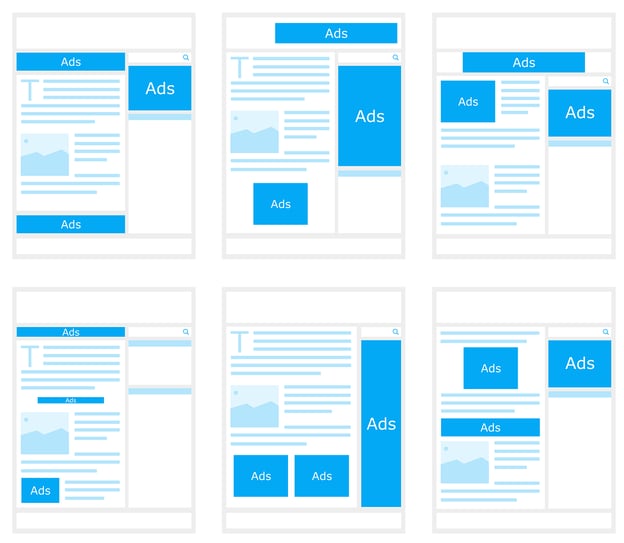In Google Ads, ad creation is the step where advertisers design the actual message they want to display to potential customers.
It involves crafting headlines, and descriptions, and depending on the ad type, choosing images or videos. The goal? To entice users to click through to your website or take a specific action.
The Significance of Ad Creation
- First Impressions Matter: Your ad might be a user's first interaction with your brand. A well-crafted ad can set the right tone and build trust.
- Drive Action: A compelling ad can motivate users to click, leading to potential conversions such as sales, sign-ups, or other valuable actions.
- Improve Ad Performance: Google considers ad relevance and click-through rate (CTR) when determining your ad's position and cost-per-click. Effective ads can result in better ad placements and potentially lower costs.
Steps to Effective Ad Creation
- Know Your Audience: Understand who you're targeting. What are their needs, interests, and pain points? Tailor your message to resonate with them.
- Craft Compelling Headlines: The headline is often the first thing users see. Make it attention-grabbing and relevant to the keyword/search query.
- Utilise the Description: This space allows you to provide additional details. Highlight unique selling points, offers, or call-to-actions (CTAs).
- Embrace Ad Extensions: Google Ads offers ad extensions that can provide additional information like phone numbers, location, or more site links. They can boost visibility and provide more reasons for users to click.
- Visuals for Display and Video Ads: If you're running display or video ads, ensure your visuals are high-quality, relevant, and engaging. Remember, they need to align with your brand and message.
- ABT (Always Be Testing): Create multiple ad variations to see what resonates best with your audience. Regularly review performance and refine accordingly.
Understanding Google Ads Copy
Google Ads is Google's online advertising platform, responsible for many of the ads you see online, including those at the top of your Google search results, on Google Maps, and across numerous websites through display advertising. Google Ads operates on a pay-per-click (PPC) model, where you pay a small fee each time somebody clicks on your ad.
The benefits of advertising on Google are extensive. With more than 90% market share and being the most popular search engine globally, your ads are guaranteed exposure. Google Ads also allows you to target your advertising precisely. You can choose to show your ads to people based on their demographics (age, gender), their search history, and even how they've interacted with your brand in the past.
However, getting your ads in front of people is one thing, persuading them to click is another. This is where the craft of writing persuasive, eye-catching Google Ads copy comes into play.
Components of Google Ads Copy
There are different types of Google Ads (search, display), but you'll almost always need copy for these components:
- Headline: Your headline is the most critical part of your ad text since people will likely read it before anything else. A good strategy is to include words your target audience likely used in their Google search.
- Display URL: Your display URL is the web address that appears on your ad, giving your potential customers an idea of where they'll end up after they click.
- Description: This is where you delve into more detail about the product or service you're advertising. It's also a good idea to include a call to action--something you want the people clicking your Google ad to do.
The messaging used in your Google ad copy doesn't need to follow a rigid formula. The key is to stand out and to achieve this, it's crucial to test different approaches to Google Ads copy to discern which resonates best with your target audience.
Different Approaches to Google Ads Copy
Below are the major types of ad copy approaches that you can experiment with:
- Features: Highlight the physical or tangible aspects of your product or service.
- Benefits: Call out the positive outcomes the visitor will experience from the product or service.
- Problem: Focus on the actual issue at hand to relate to the problem the visitor is trying to solve.
- Testimonials: Leverage the words of your existing customers to provide social proof.
- Reviews: Highlight third-party reviews of the product or service, not from customers directly.
- Prequalifying: A technique for weeding out people who might not be a good fit for your service before they click.
Once you've tested what works best, mirror that on your PPC landing page to create a seamless, compelling buyer journey.
Google Ads Copy Best Practices
So, what makes good Google ad copy? There's no one-size-fits-all approach to writing Google Ads, but following some best practices will make you more successful. Here are eight tips for writing the best ad copy for Google Ads:
- Use keywords that match user intent: One of the key recommendations for writing strong Google Ads copy is to include keywords that mirror the searcher's query. By using phrases similar to what they searched for, you can assure them that they're in the right place.
- Match the specificity of your potential customers: Every time a person conducts a Google search, their query holds a degree of specificity. It's important to reflect demonstrated intent as best as possible.
- Use assets (formerly "ad extensions") generously: Assets are additional pieces of functionality you can include with your Google ad. These give you extra opportunities to persuade potential customers through copy.
- Leverage dynamic features to customise copy: In addition to assets, there are other features we can use to ensure that our Google Ads are as impressive as possible.
- Always include a call to action: When it comes down to it, we're running ads because we want the visitor to take a specific action.
- Follow through on the promises you're making: This is crucial; your landing page should deliver on what your Google ad promises.
- Stay Current: Current events are more likely to grab attention, and using recent statistics or developments in your ad copy can make it more engaging and believable.
- Get Super Specific: Specific numbers and details can make your ad copy more compelling and credible.
- Make Things Personal: Using personal pronouns like "you" and "your" can make your ad copy more engaging and relatable to potential customers.
- Make Your Ads Hyper-Local: By creating geographic-specific Google Ads campaigns, you can make your business feel more accessible and local to potential customers.
Common Mistakes to Avoid
- Overloading with Information: While it's tempting to highlight all features or offers, avoid cramming too much. It can overwhelm users and dilute your message.
- Ignoring Mobile Users: Ensure your ads and landing pages are mobile-friendly. A significant portion of searches occurs on mobile devices.
- Forgetting a CTA: Guide users on what to do next, whether it's "Shop Now," "Learn More," or "Sign Up."
The key takeaway is that writing Google Ads copy requires a deep understanding of the customer's needs, a focus on benefits over features, and a continual cycle of testing and refining. So, start crafting your ad copy today, and watch your click-through rates, quality scores, and conversion rates soar.
Interested in every element of B2B Google Ads? We’ve got you covered. Find out more through one of the article below:
- Google Search Ads for B2B
- Google Ads Remarketing
- Google Display Ads for B2B
- Google App Campaigns for B2B
- Google Shopping Ads for B2B
- YouTube Ads for B2B
Or, why not check out our Google Ad Best Practice + Audit Template.





